EXPLORE
8 Fascinating Facts About The Sun
Published
8 months agoon

Shutterstock
The Sun, our star, is the luminous heart of the solar system, around which all planets revolve. It is a colossal sphere of hot plasma, fueled by nuclear fusion, that dominates the celestial neighborhood with its gravity and light. The Sun’s influence extends far beyond just providing daylight; it governs climate patterns, drives the photosynthesis process essential for life on Earth, and shapes the conditions in space that affect satellite and communication technologies. Understanding the Sun’s properties, behavior, and cycles is crucial not only for scientific exploration but also for the practical implications on Earth and our technological infrastructure. Through a series of detailed insights, we delve into the various facets of the Sun, from its core to its surface, and from its magnetic fields to the effects it has on our planet and beyond.
Type of Star

Shutterstock
The Sun is classified as a G-type main-sequence star, also known as a yellow dwarf. This classification is based on its temperature and the fact that it is in the main sequence phase, where it fuses hydrogen into helium in its core. The G2V classification further specifies its surface temperature and luminosity. This category of star is relatively common in the universe, making the Sun a typical example of a main-sequence star.
Age

Shutterstock
At approximately 4.6 billion years old, the Sun is considered middle-aged in terms of stellar lifespans. It formed from a molecular cloud of gas and dust, gradually condensing under gravity to ignite nuclear fusion in its core. The Sun is expected to continue fusing hydrogen into helium for another 5 billion years, after which it will enter the red giant phase. Understanding the Sun’s age helps scientists study the evolution of the solar system and predict its future.
Size
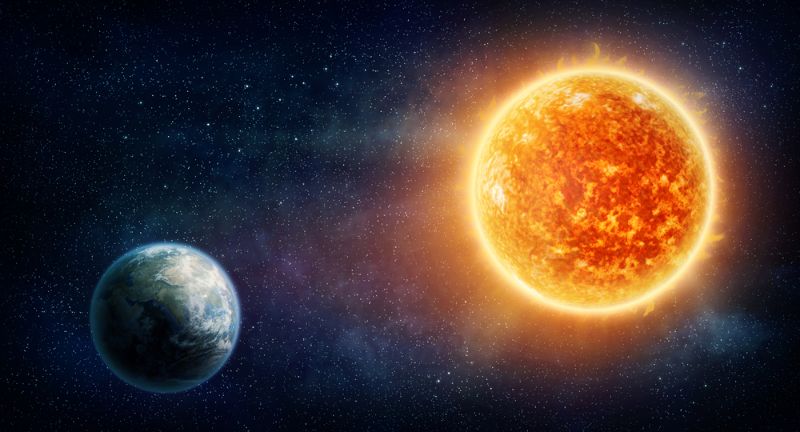
Shutterstock
The Sun’s diameter is about 1.39 million kilometers, making it large enough to fit Earth inside it about 109 times. This vast size is typical for a star in the main sequence phase of its life. The immense volume of the Sun is a critical factor in its ability to sustain nuclear fusion at its core, which powers the Sun and provides energy to the solar system. The comparison of the Sun’s size to Earth puts into perspective the vastness of celestial bodies and the scales involved in astronomy.
Mass
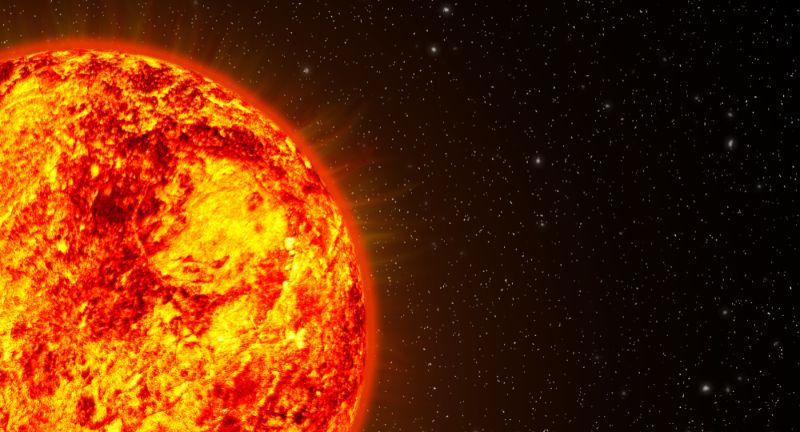
Shutterstock
Holding 99.86% of the solar system’s total mass, the Sun’s mass is approximately 330,000 times that of Earth. This immense mass generates a gravitational pull strong enough to keep the solar system’s planets in orbit around it. The mass of the Sun is a critical factor in its ability to sustain nuclear fusion, which is the source of its luminosity and heat. The distribution of mass within the Sun also affects its structure and evolution, influencing phenomena such as solar flares and sunspots.
Core Temperature

Shutterstock
The core of the Sun reaches temperatures around 15 million degrees Celsius, a necessary condition for nuclear fusion to occur. At these extreme temperatures, hydrogen atoms collide with enough force to fuse together, forming helium and releasing energy. This process is the fundamental source of the Sun’s energy, powering the light and heat it emits. The core’s temperature and pressure are balanced in a way that allows the Sun to remain stable over billions of years.
Surface Temperature
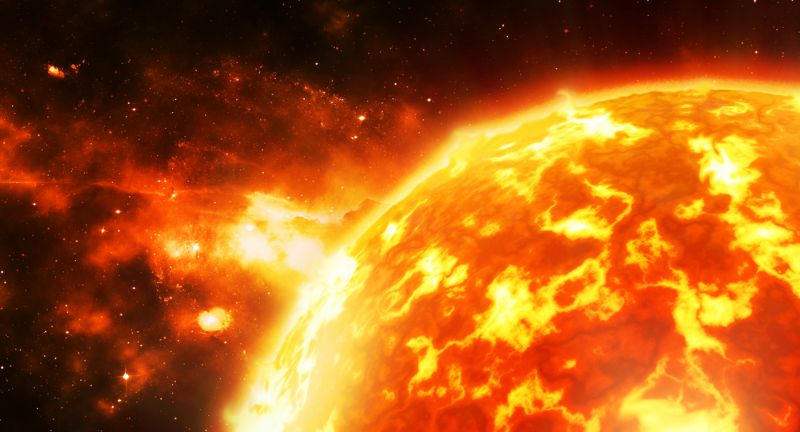
Shutterstock
The surface of the Sun, known as the photosphere, has a temperature of about 5,500 degrees Celsius. This temperature is cooler than the core but still hot enough to emit the bright light that reaches Earth. The surface temperature varies in different regions, leading to phenomena such as sunspots, which are cooler areas on the Sun’s surface. The photosphere is the layer of the Sun visible from Earth, and its temperature determines the spectrum of sunlight we receive.
Composition
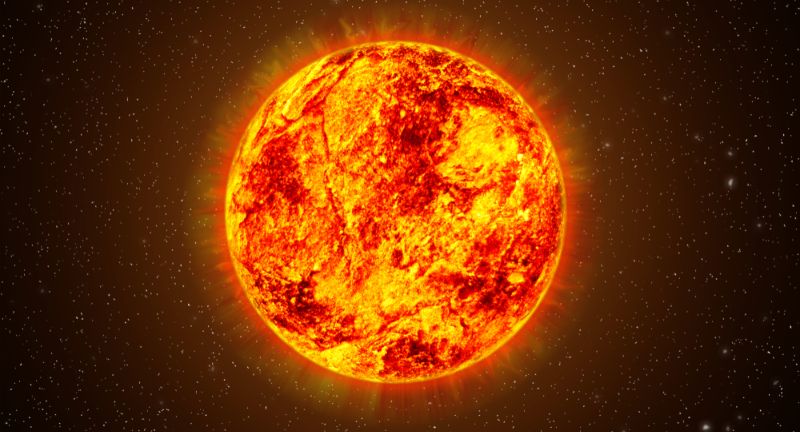
Shutterstock
The Sun is primarily composed of hydrogen (about 75%) and helium (about 24%), with the remaining 1% consisting of heavier elements such as oxygen, carbon, neon, and iron. This composition is a result of the nuclear fusion process at its core, where hydrogen is converted into helium. The presence of heavier elements is crucial for the Sun’s magnetic field and the generation of solar phenomena like flares and sunspots. Studying the Sun’s composition helps scientists understand stellar evolution and the distribution of elements in the universe.
Nuclear Fusion

Shutterstock
The Sun generates its energy through the process of nuclear fusion, where hydrogen nuclei fuse to form helium, releasing vast amounts of energy. This process occurs in the core, where the temperature and pressure are high enough to overcome the repulsive force between atomic nuclei. The energy produced by fusion not only powers the Sun but also provides all the light and heat necessary for life on Earth. The study of nuclear fusion in the Sun has also inspired research into fusion as a potential energy source on Earth.
Sunspots
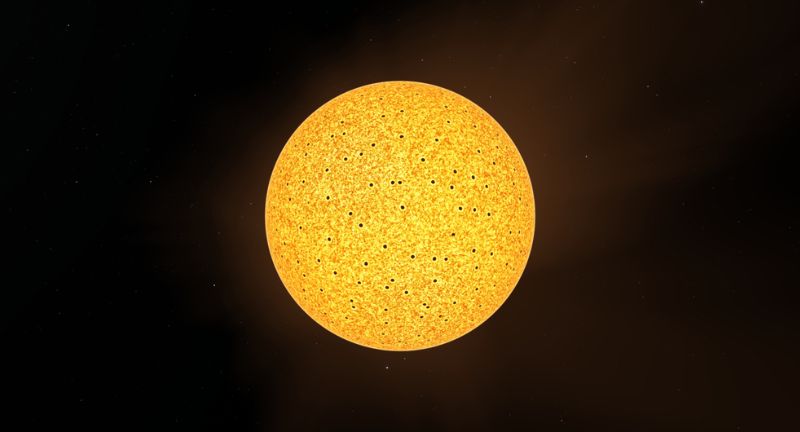
Shutterstock
Sunspots are cooler, darker areas on the Sun’s surface, caused by intense magnetic activity that inhibits convection. These spots appear dark because they are cooler than the surrounding areas, typically by about 1,500 degrees Celsius. Sunspots can be vast, sometimes spanning tens of thousands of kilometers in diameter. They are a key aspect of solar observation, as their number and activity levels are indicators of the Sun’s magnetic activity cycle.
Solar Flares

Shutterstock
Solar flares are sudden, intense bursts of radiation emanating from the Sun, resulting from the release of magnetic energy associated with sunspots. These flares can accelerate solar particles to high speeds, emitting radiation across the electromagnetic spectrum. Solar flares impact Earth’s ionosphere, affecting radio communications, navigation systems, and even causing power outages. Monitoring solar flare activity is crucial for predicting space weather and protecting technological infrastructure on Earth and in space.
Conclusion
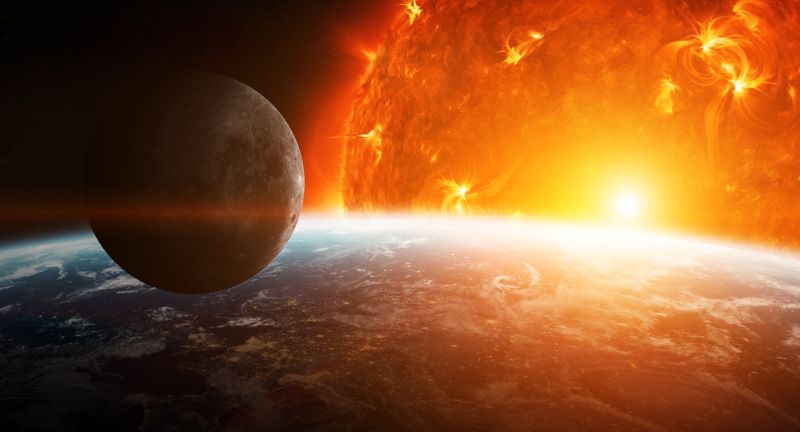
Shutterstock
The exploration of the Sun, from its fiery core to the far-reaching influence of its solar wind, offers a window into the forces that power our solar system and shape life on Earth. As we peel back the layers of this magnificent star, we uncover the intricate dynamics of its behavior and the profound impact it has on the cosmos and our existence. The study of the Sun not only enlightens us about our own star’s mysteries but also teaches us about the nature of stars throughout the universe. By harnessing the knowledge gained from solar observations and research, we continue to safeguard our technological society against the Sun’s more tumultuous activities, ensuring that we thrive alongside our ever-active and life-giving star.
More From Bon Voyaged
-


10 Plants That Can Hurt You If You Touch Them
-


Extreme Adventure: Hiking the World’s Toughest Trails
-


Most Isolated Regions on Earth Revealed
-


11 Most Beautiful Places In The World
-


25 Hidden Gem Vacation Spots Around The World
-


20 Places Around The World Where People Seem To Be…
-


9 Craziest Natural Phenomenons From Around The World
-


25 Most Devastating Hurricanes In History
-


27 Wellness Inspired Trips To Add To Your Bucket List
-


20 Countries And The Most Popular Soft Drink According To…
-


25 Flowers And Plants That Thrive Going Into The Autumn…
-


30 Reasons Why Australia Deserves a Spot on Your Travel…

